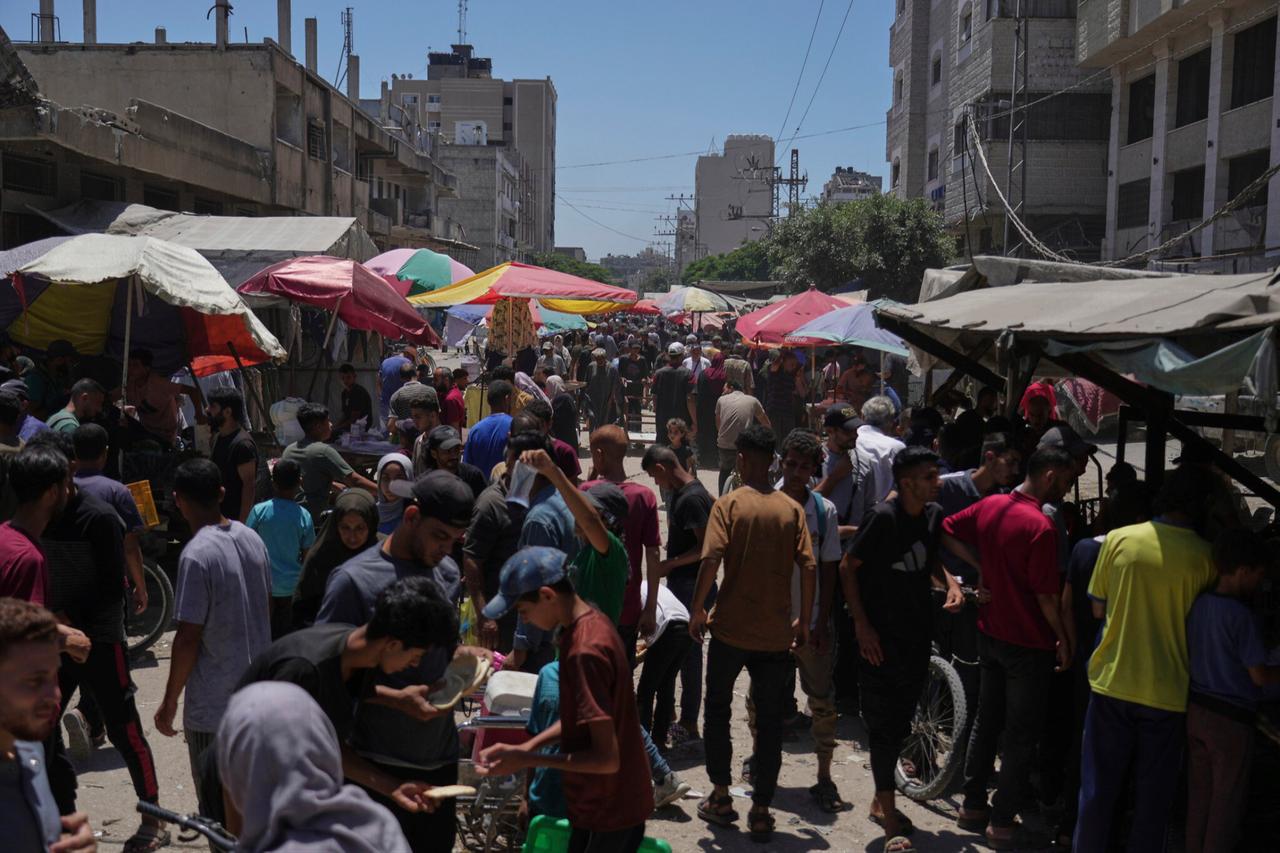
In the heart of Gaza City, Al-Sahaba Market continues to operate—smaller, quieter, but still standing—despite relentless airstrikes and what residents describe as a campaign to force them from their homes.
Traders say the marketplace now represents one of the few places where ordinary life persists under siege.
Located in the Derec neighborhood, Al-Sahaba Market has seen most of its stalls destroyed or deserted.
Yet, a handful of vendors still open daily, selling whatever goods they can find. For them, keeping the market alive has become an act of resistance against efforts to empty Gaza City.
The latest crisis deepened on Oct. 1, when the Israeli army closed Reshid Street, Gaza’s coastal road linking the south and north. This followed the earlier closure of Selahaddin Street in March—formerly the main north-south route across the Strip.
Since November 2023, Israeli forces have also maintained the Netzarim Corridor, a military road stretching from Gaza’s eastern border to the Mediterranean Sea.
Reshid Street briefly reopened during a humanitarian truce in January 2024 but has been shut again, leaving civilians in the north almost entirely cut off.
The closure of these key roads has halted the delivery of food and other essentials.
With aid convoys unable to pass through southern checkpoints, famine conditions have reemerged in the north.
Those attempting to move south must pass through strict security checks and interrogations, residents say.
Forty-year-old Mahir Mahmud, who sells a few vegetables from his stall at Al-Sahaba Market, points to his empty crates. “After Reshid Street was closed, this is all I have left,” he says.
Mahmud explains that hundreds of thousands of residents who stayed behind can no longer access flour, cooking oil, or fresh produce.
Ahmed Delul, 27, a communication graduate from Al-Azhar University, now supports his family by selling canned goods from a small cart.
He says the continuing bombardment has wiped out most jobs, pushing every Gazan below the poverty line, according to earlier World Bank classifications.
With flour and other staples blocked, canned beans have become one of the main foods families rely on to survive.
Delul says the price of a single can of beans has increased fivefold since the war began. “Some Palestinians cannot find even a mouthful to eat,” he adds, warning that if Israel’s blockade continues, prices will rise even higher.
He describes the market as “barely alive,” with people simply unable to afford what little remains.
During his interview, an Israeli tank shell exploded nearby in Derec, sending a thick cloud of smoke across the area and reducing visibility to almost zero. Vendors fled momentarily but soon returned.
Delul went back to his cart and resumed selling, saying he had no choice but to keep working to feed his family.
Riding through the market on his bicycle, Khalid Sayf al-Din says he spends hours looking for affordable food for his wife and children.
“I searched for hours for flour, food and vegetables, but I could not find them,” he says, describing the shortages as unprecedented since the closure of Reshid Street.
According to Gaza’s Government Media Office, more than half a million people still live in Gaza City under total siege.
Despite dire conditions, many residents continue to reject calls to move south. The Israeli army’s ground assault—launched on 16 September to seize control of the city—continues alongside airstrikes.
Locals say Israel has ignored what they describe as a call from U.S. President Donald Trump to halt the bombardment.